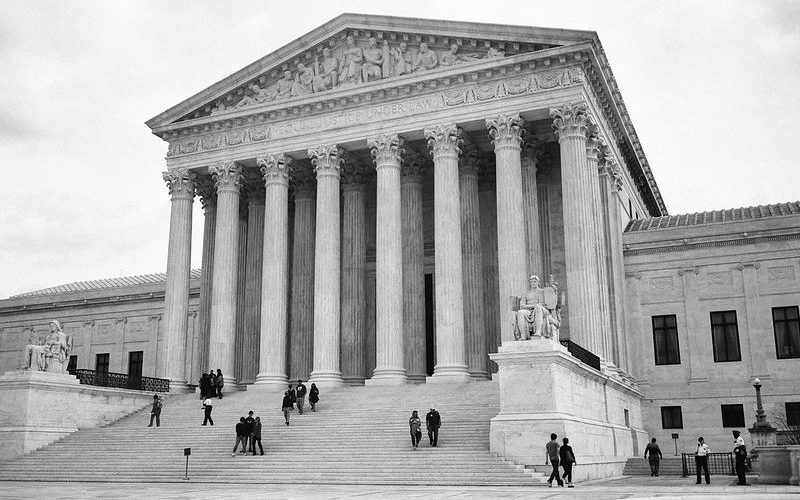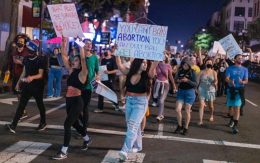‘Fight for the things that you care about, but do it in a way that will lead others to join you!’
Justice Ruth Bader Ginsburg
Positive law essentially reflects and objectifies certain moral, political, ethical, and metalegal considerations. It usually regulates social relations by taking account of numerous rights, legitimate interests, social facts, beliefs, and principles, which are ingrained in a certain legal system. There have been countless debates regarding the very nature of law and the conditions under which a putative norm would be legally valid.
Andrei Marmor and Alexander Sarch suggest that if we make the legal validity of norms, such as legal principles, depend on the moral argument, we allow for the possibility that an entire legal community may get its laws wrong. Any moral mistake in the reasoning leading to a legal principle might render the conclusion about the principle unsound, and the principle itself thus not legally valid (Marmor and Sarch, 2001, sec. 1, par.9).
Although these conjectures concerning the philosophy of law are not the immediate subject of this article, they convey some important ideas which can be taken into account in the process of examining the topic in question.
When analyzing different courts’ case-law, we cannot help but notice how oftentimes a particular court faces the cumbersome challenge of having to balance one right against another or opposing interests and the like. For instance, there can sometimes be a serious clash between freedom of speech and expression and the right to privacy. On many occasions, courts had to reconcile certain rights and interests, such as economic and social rights and the freedom of conscience or the freedom of religion and belief and many others. What is even more problematic is having to solve cases which rest on hotly debated topics in society, especially when fundamental human rights are at stake. In countries with the common law system, case law is of primary importance and landmark Supreme Court decisions in the USA, for example, entail strikingly significant consequences for society. In light of the recent ruling of the US Supreme Court, which stirred up a hornet’s nest by overturning Roe v. Wade, this article touches upon the implications of judge-made law as well as provides relevant arguments which aim at contemplating the underlying metanormative issues, which relate to laws on abortion.
In the masterpiece of legal thought from the 18th century, The Spirit of Laws, Charles de Montesquieu purports that ‘to say that there is nothing just or unjust but what is commanded or forbidden by positive laws, is the same as saying that before the describing of a circle, all the radii were not equal.’ (Montesquieu, 2001, p.19). Indeed, the vehement imagination of life has proven that rigid law provisions can by no means encompass every bizarre situation which may come about, and that is namely why judges are granted the extraordinarily important responsibility to interpret the law. Not infrequently can the law be vague or ambiguous, and judges need to support their decisions with resplendent reasoning, which finds its roots in the pursuit of justice. What is crucial, however, is that judges adhere to the reasonable boundaries set by the concrete legal framework when unleashing their legal creativity. It is far from unusual to be at a loss as to where these boundaries end.
Lord Hodge, Justice of the Supreme Court of the United Kingdom, remarks that ‘in difficult cases where there is a clash between opposing legal principles, a judge looks to the consequences of rival legal rulings. This consequential analysis involves an assessment of whether the grounds of judgement are repeatable in other cases, as universal propositions of law, a requirement which one might describe as “rule universalism”. A consequential analysis also involves the judge in assessing, so far as he or she can, the socio-economic consequences of a particular determination. While the second form of consequential analysis is important, the decision which most closely fits the existing common law should be adopted. Thereby judicial development of the law would remain interstitial and would avoid radical legislative change which requires a democratic mandate, which judges do not have.’ (Hodge, 2019, p.11, 12). He also cites Professor Neil MacCormick, who proclaims that ‘Wisdom, humanity and common sense – in short, judgement – had a role to play in judicial reasoning’. As Lord Hodge takes an eventful journey to the lands of the scope of judicial law-making in the common law tradition, he lists a plethora of considerations stipulated by Lord Lowry in the C v Director of Public Prosecutions case. According to him, ‘disputed matters of social policy are less suitable areas for judicial intervention than purely legal problems’ and ‘Fundamental legal doctrines should not be lightly set aside’ (Hodge, 2019, p.12).
From a constitutional law viewpoint, one can argue whether judges have crossed reasonable boundaries both in the Dobbs v. Jackson and the Roe v. Wade cases.
Laurence Tribe, university professor emeritus of constitutional law at Harvard Law School (Cambridge, MA) questions the arguments of the Supreme Court, according to which the Constitution makes no reference to abortion and therefore such right is not implicitly protected, by quoting the Ninth Amendment. Pursuant to that provision, the omission of any rights in the document should not be interpreted to mean that they do not exist. “The Constitution was never intended to name all of the rights that we have”, he said. “In America, if something isn’t outlawed, it’s protected.” (Jaffe, 2022, sec.3, par. 4). Also, legal affairs correspondent for National Public Radio and veteran Supreme Court observer Nina Totenberg calls the ruling “the legal equivalent of a nuclear bomb” (Jaffe, 2022, sec.1, par.3).
Apparently, what is utterly outrageous about the Dobbs v Jackson ruling is the overlooking of the stare decisis principle (respect for precedent) as well as some other fundamental rights and principles such as equality, the right to bodily integrity and personal liberty. It is evident from the reasoning of the ruling that the interpretation method, which the majority of the judges adopted, is beyond rigorous, constraining and obdurately following the letter of the law.
Unsettlingly, another issue which threatens the functioning of American democracy ought to be considered. Before his election, Donald Trump said that the overturning of the landmark Supreme Court decision giving women the right to abortion “will happen, automatically,” if he is elected president and gets to appoint justices to the high court (Mangan, 2016). Such statements undermine the fundamental importance of the separation of powers principle and meddle with the independence of the judiciary. These challenges are capable of questioning the effectiveness with which the established system works and may be subject to another piece of scientific analysis.
Criticism on Roe
Nevertheless, the way in which Roe v Wade was decided has also been subject to a lot of criticism. Even Judge Ruth Bader Ginsburg had expressed her disagreement with some of the points that were made. More importantly, it is worth mentioning that it was not the outcome of the decision that she was not in favour of but rather its obtrusiveness and the velocity with which it was moving. She made the judicious remark that: “A less-encompassing Roe, one that merely struck down the extreme Texas law and went no further on that day,” she said, “might have served to reduce rather than to fuel controversy” (Blake, 2022).
Another intriguing piece of criticism that she had put forward has to do with the legal basis upon which the case was decided. Judge Ginsburg believed that the case could have been solved by relying preponderantly on the right to equal protection, not the right to privacy (Blake, 2022).
Apart from all these purely legal complications that the Dobbs v Jackson ruling entails, it is essential that some other questions of metanormative nature be examined. When it comes to abortion, innumerable biological, philosophical, theological, social and other issues arise. In order for a fruitful debate to take place in the relevant representative institutions and society, people should be informed, well-educated, and tolerant and strive not to divest themselves of common sense and empathy when taking a stance for or against something. Simon Weil once wrote: ‘Nearly everywhere—often even when dealing with purely technical problems—instead of thinking, one merely takes sides: for or against. Such a choice replaces the activity of the mind. This is intellectual leprosy; it originated in the political world and then spread through the land, contaminating all forms of thinking. This leprosy is killing us’ (Goodreads, no date). These words take on a very powerful meaning, and it won’t do us harm to take them into consideration each time we make up our minds to support or rebel against a certain idea.
When does human life begin?
One of the difficult questions, which is the mother of lots of problems, is: ‘When does human life begin?’
Pro-life organization Center for Human Dignity has published an article which purports to maintain sound arguments against abortion. In terms of the aforementioned question, the organization is intransigent. The author of the article is trying to dress her perception in a scientific attire by claiming that: ‘These are irrefutable facts, about which there is no dispute in the scientific community ‘(Szoch, p.4).
For example, she quotes some scientific facts such as: ‘The zygote is composed of human DNA and other human molecules, so its nature is undeniably human and not some other species. This DNA includes a complete “design,” guiding not only early development but even hereditary attributes that will appear in childhood and adulthood. The organization arrives at the conclusion that the scientific evidence is quite plain: at the moment of fusion of human sperm and egg, a new entity comes into existence which is distinctly human, alive, and an individual organism—a living and fully human, being’ (Szoch, p.4).
However, when somebody says that something is the absolute truth and no one can question it, it is critical that we be very cautious. In contrast, Sahotra Sarkar- Professor of Philosophy and Integrative Biology, who delivers his opinion in a more humble way and does not subscribe to the infallibility of his opinion, assumes that defining when human life begins is not a question science can answer- it is a question of politics and ethical values. In his view, anti-abortionists seek to use science as an absolute standard in any discussion of abortion’s constitutionality, setting a definition of human life that they hope will be immune to any counterargument. He adds that while possibly well-intentioned, this appeal to scientific authority and evidence over discussions of people’s values is based on faulty reasoning. Philosophers such as the late Bernard Williams have long pointed out that understanding what it is to be human requires a lot more than biology. And scientists cannot establish when a fertilized cell or embryo or fetus becomes a human being. Professor Sarkar also talks about the developmental stages and shares the following interesting analogy: ‘The first of these stages is fertilization in the egg duct when a zygote is formed with the full human genetic material. But almost every cell in everyone’s body contains that person’s complete DNA sequence. If genetic material alone makes a potential human being, then when we shed skin cells – as we do all the time – we are severing potential human beings.’ (Sarkar, 2021)
In the Roe v. Wade ruling in 1973, the Supreme Court stated the following: ‘We need not resolve the difficult question of when life begins. When those trained in the respective disciplines of medicine, philosophy, and theology are unable to arrive at any consensus, the judiciary, at this point in the development of man’s knowledge, is not in a position to speculate as to the answer.’ (U.S. Reports: Roe v Wade, 1973, p.47).
When it comes to the abortion debate, deeply religious and conservative communities are prone to base their opinion on the authority of the Holy Bible. A very common practice is the cherry-picking of Bible verses in order to support certain theses. To illustrate, they might quote verses such as Deuteronomy 30:19: ‘I call heaven and earth as witnesses today against you, that I have set before you life and death, blessing and cursing; therefore choose life, that both you and your descendants may live’ or Jeremiah 1:5: ‘Before I formed you in the womb I knew you; Before you were born I sanctified you’; or perhaps Luke 1:15: ‘He will also be filled with the Holy Spirit, even from his mother’s womb’ (The Holy Bible, 1994).
There are a few major problems with presenting such arguments to both religious and secular audiences as valid. First of all, these are petitio principii arguments, i.e. the premises presume, openly or covertly, the very conclusion that is to be demonstrated. Secondly, the verses are taken out of the narrative without any background context. Thirdly, we can point out that while citing verses, which suit particular concepts, they thoroughly neglect other Bible verses, which are obviously anything but pro-life. Here are some examples: ‘then the priest shall put the woman under the oath of the curse, and they shall say to the woman- “the Lord make you a curse and an oath among your people, when the Lord makes your thigh rot and your belly swell” (Numbers 5:25), or: ‘Ephraim is stricken, Their root is dried up; They shall bear no fruit. Yes, were they to bear children, I would kill the darlings of their womb.’ (Hosea 9:16) and ‘Samaria is held guilty, For she has rebelled against her God. They shall fall by the sword, Their infants shall be dashed in pieces, And their women with child ripped open.’ (Hosea 13:6) (The Holy Bible, 1994).
By and large, through doing this logical experiment, it can be concluded that no matter what we read, the Bible, the Constitution or the daily newspaper, we should never forget to apply critical thinking. Even the prominent Christian author C. S. Lewis is of the opinion that: ‘We must not use the Bible as a sort of encyclopedia out of which texts can be taken for use as weapons’ (QuoteFancy, no date).
The consequences of restrictive abortion laws
Admittedly, in no way can we turn a blind eye to the multiple obstacles which restrictive abortion laws entail. According to Amnesty International research, 1 in 4 pregnancies end in abortion every year, and 25 million unsafe abortions take place each year (Amnesty International, no date).
When undertaken by a trained healthcare provider in sanitary conditions, abortions are one of the safest medical procedures available, safer even than childbirth.
But when governments restrict access to abortions, people are compelled to resort to clandestine, unsafe abortions, particularly those who cannot afford to travel or seek private care. In addition to that, unsafe abortions are the third leading cause of maternal deaths worldwide and lead to an additional five million largely preventable disabilities, according to the WHO. The criminalization of abortion results in a “chilling effect”, whereby medical professionals may not understand the bounds of the law or may apply the restrictions in a narrower way than required by the law. This may be because of a number of reasons, including personal beliefs, stigma about abortion, negative stereotypes about women and girls, or the fear of criminal liability (Amnesty International, no date).
Amnesty International’s report outlines a set of problems which may occur as a result of tight legislation on abortion. One of them is the potential denial of reproductive health services to certain individuals, which is a form of discrimination. Another one lies in realizing that the mere perception that abortion is unlawful or immoral leads to the stigmatization of women and girls by health care staff, family members, and the judiciary, among others. Consequently, women and girls seeking abortion risk discrimination and harassment. Some women have reported being abused and shamed by health care providers when seeking abortion services or post-abortion care. In this respect, Amnesty International emphasizes that forcing someone to carry an unwanted pregnancy, or forcing them to seek out an unsafe abortion, is a violation of their human rights, including the rights to privacy and bodily autonomy.
What’s more, the report warns that tough abortion laws may violate the European Convention on Human Rights since, in many circumstances, those who have no choice but to resort to unsafe abortions also risk prosecution and punishment, including imprisonment, and can face cruel, inhuman and degrading treatment and discrimination in, and exclusion from, vital post-abortion health care (Amnesty International, no date).
There are some other serious hardships, which the report does not exclusively mention. For instance, there is a huge problem with giving birth to a child destined to live without the needed love and care every human being deserves. Such scenarios may lead to countless risks for the child’s mental health or that of the parents. Moreover, inundating foster homes is another impending threat.
The National Women’s Law Center lists a few serious impediments that the Dobbs v Jackson ruling leads to. First, the Court barely mentions women or others who can get pregnant—except to wrongly suggest that forced pregnancies will not harm them (Banker, 2022).
Disturbingly, the report points out that many of the states with the most restrictive abortion laws fail to support pregnant people, children, and families. In fact, as the dissent notes, citing the National Women’s Law Center’s amicus brief, in Mississippi, there is no guaranteed paid family leave, no general ban on pregnancy discrimination in the workplace, and the state has the worst infant mortality rate in the country (Banker, 2022).
Moreover, the Court denies that its ruling will affect other constitutional rights. As the dissent makes clear, nonetheless, “[t]he Court’s precedents about bodily autonomy, sexual and familial relations and procreation are all interwoven–all part of the fabric of our constitutional law, and because that is so, of our lives” (Banker, 2022). Henceforth, the link between all of these rights enshrined in the Constitution can merely be glossed over.
Apart from that, The National Women’s Law Center highlights that the majority decision relies upon common law court decisions, 19th century statutes, and historical legal treatizes—all written by men memorializing the law at a time when women generally had no independent legal status. As the dissent explains, the men who ratified the Constitution “did not understand women as full members of the community embraced by the phrase ‘We the People.'” In this way, the majority relies on a sexist history of men denying rights to women in order to” consign[ ] women” and all who can become pregnant “to second class citizenship” (Banker, 2022).
The aforementioned problems may lead us to believe that it all boils down to the plight of women’s rights. Interestingly, even some of the issues which the pro-life Center for Human Dignity draws the reader’s attention to virtually refer to imposing threats on a woman’s choice. For example, the organization mentions a website which women can access and help each other cope with the aftermath of their abortions. The article says that they tell stories of how they were coerced into aborting their children by boyfriends, husbands, friends, and family. They describe how abortion was far from being a choice (Szoch, p.20). Hence, we see that when the situation is reversed, fundamental human rights can be blatantly violated too.
However, in this case, a woman is made to abort and thus, her right to become a mother is infringed. An outstanding example of that is undoubtedly the story of Susan Struck, an Air Force captain who sued the secretary of Defense after she became pregnant and military policy forced her to get an abortion or resign. In Struck v. Secretary of Defense, Ruth Bader Ginsburg, who represented Susan Struck at that time, argued that forcing pregnant women to have an abortion or leave the military was fundamentally discriminatory. According to Ginsburg, this policy unfairly placed upon women the burden of child-rearing denied them equal opportunities and placed them second to men. “Until very recent years, jurists have regarded any discrimination in the treatment of pregnant women and mothers as ‘benignly in their favor.’ But in fact, restrictive rules, and particularly discharge for pregnancy rules, operate as ‘built-in headwinds’ that drastically curtail women’s opportunities,” she wrote (USA Today News, 2020).
Need for a social debate
The gravity of the abortion issues requires a large-scale social debate. It is pivotal that the topic is discussed with deep understanding. Irrefutably, every problem needs to be treated by getting to its very roots. If we are aiming at curtailing the number of abortions, it is highly unlikely that this will happen if we ban them. However, if we prioritize sex education and curbing poverty, for example, it might happen. The Amnesty International report cites evidence which shows that abortion rates are higher in countries where there is limited access to contraception. Abortion rates are lower where people, including adolescents, have information about and can access modern contraceptive methods and where comprehensive sexuality education is available, and there is access to safe and legal abortion on broad grounds (Amnesty International, no date).
In conclusion, it is crucial to underline the fact that whether we are having a debate on abortions or some other issues, the wisest thing to do is not to ostracize those who hold opposing views but, essentially, as Judge Ginsburg once said, to fight for the things we care about but in a way that will lead others to join us. This sort of wisdom is perfectly conveyed in Emily Dickinson’s poem “Tell all the truth but tell it slant”:
Tell all the truth but tell it slant —
Success in Circuit lies
Too bright for our infirm Delight
The Truth’s superb surprise
As Lightning to the Children eased
With explanation kind
The Truth must dazzle gradually
Or every man be blind — (Poetry Foundation, no date)
Sources








Be First to Comment